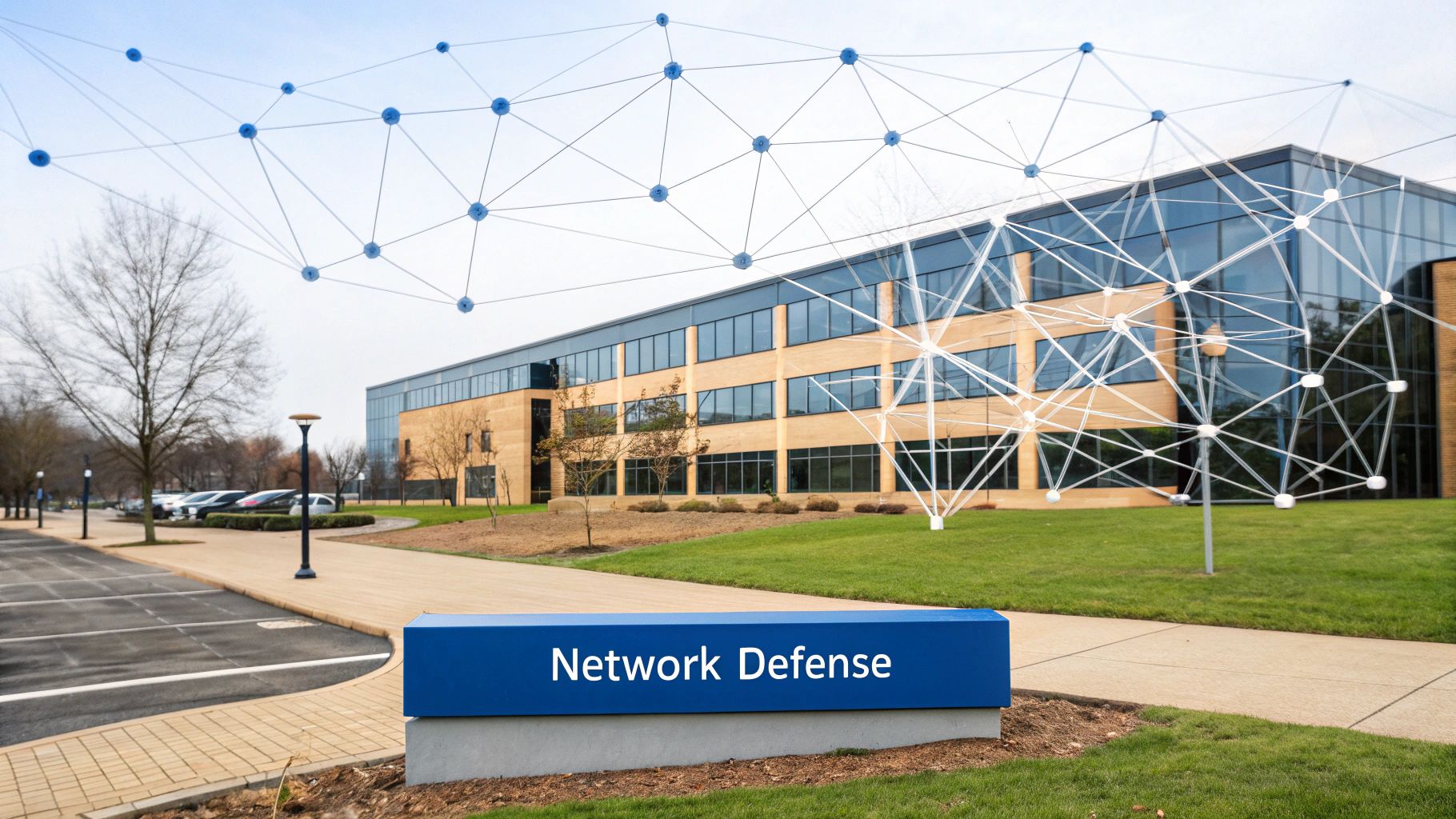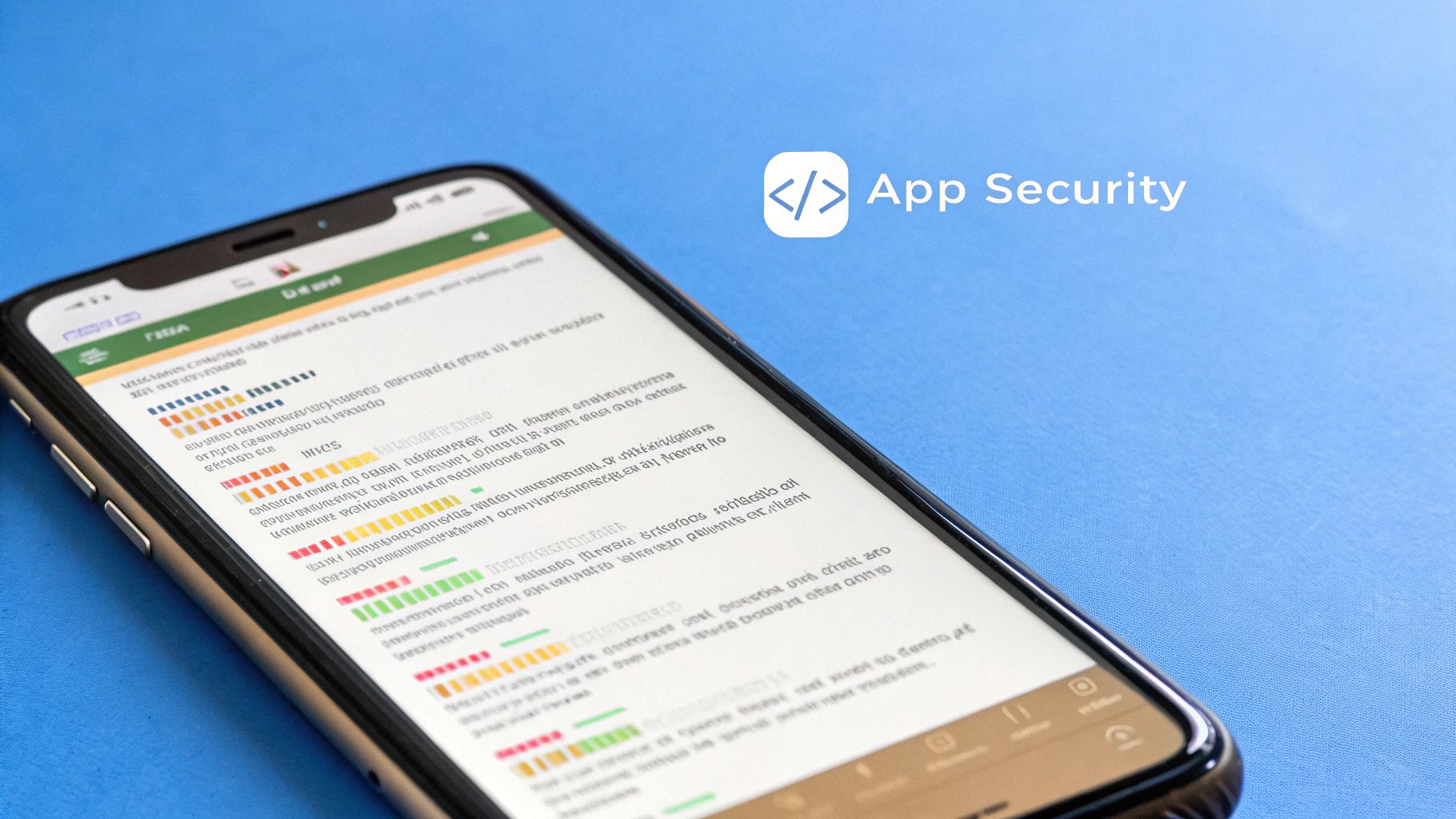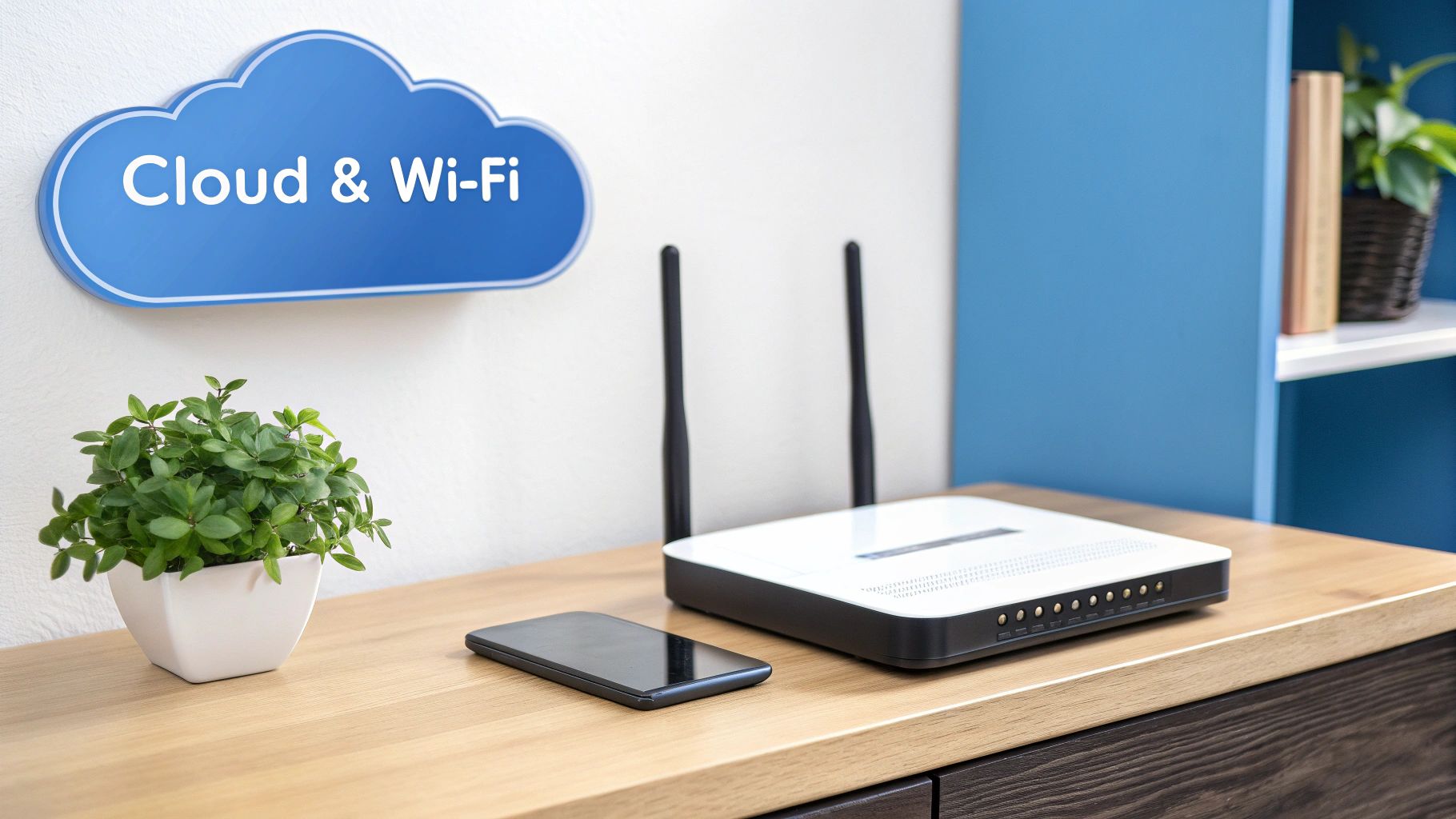Penetration testing isn't a one-size-fits-all solution. It comes in a few different types, each designed to check a specific part of a company’s security defenses. Think of it as a way to find security holes before the bad guys do.
The main types of penetration testing cover what a hacker can see from the outside (external), what an insider could do from the inside (internal), and all the ways a website or app can be broken (application testing). Understanding these helps you protect your clients and show your value.
Understanding Penetration Testing Types
For MSPs and vCISOs, knowing these different assessments is how you protect clients. The old pentesting industry has problems: high prices, confusing methods, and long waits for reports. We're the affordable solution.
We provide fast and expert manual pentesting only for the channel. We are your partner, never your competitor. Our goal is to help your clients pass compliance audits like SOC 2, HIPAA, and PCI DSS with ease.
Why Different Pentesting Types Matter
Not all security tests are the same. A test that looks for bugs in a website is completely different from one that tries to hack into an office Wi-Fi network. Using the right test is everything.
You need a specialized approach to get a real picture of your client's security. That’s why we offer a full range of pentesting services. Our team is certified with top credentials like OSCP, CEH, and CREST to find specific weaknesses and deliver a useful risk assessment.

A complete security check looks at defenses from every angle. It includes outside threats, inside risks, and the applications that run the business. This gives your clients the full picture they need to stay safe.
Why Pentesting is a Smart Investment
Penetration testing is no longer a "nice-to-have," it's a "must-have." With cyberattacks on the rise, businesses know they can't wait for a breach to happen. You can learn more about the latest penetration testing statistics and trends here.
This is especially true for companies needing to meet strict compliance demands. But even when tests are done, many vulnerabilities aren't fixed quickly. This highlights the need for simple, actionable reports that get straight to the point.
As a channel-only partner, we never compete with our MSP or vCISO clients. We provide the expertise you need to deliver high-quality, white label pentesting under your own brand, quickly and affordably. Our process is built around speed and clarity, helping clients satisfy auditors for frameworks like ISO 27001.
Assessing External and Internal Network Defenses
Think of your client's network like a fortress. An external network penetration test is like checking the walls and gates from the outside. It shows what a hacker on the internet can see and attack.
Our OSCP and CREST certified pentesters act like that attacker. They probe firewalls and public servers to find a way in. This test is essential for understanding your client's most immediate risks and is a key part of compliance for PCI DSS and SOC 2.

Uncovering Your External Security Vulnerabilities
The goal of an external penetration testing project is simple. We find and exploit weaknesses an attacker could use to get in. We often find common issues like misconfigured firewalls or outdated software.
By spotting these problems before a real attacker does, you can help clients secure their perimeter. Our fast, affordable approach delivers a clear report quickly. This lets you get started on fixing the issues right away.
Simulating Insider Threats with Internal Tests
Now, imagine the bad guy is already inside the fortress. An internal network test answers the question, "What happens next?" This could be a disgruntled employee or a hacker who stole a user's password.
This risk assessment is critical because it assumes the perimeter has failed. Our testers look for ways to move through the network and access sensitive data. It’s a mandatory check for regulations like HIPAA and ISO 27001.
An insider threat often causes the most damage. They operate with a level of trust and access an external attacker doesn't have. An internal pentest reveals how vulnerable a network is from the inside.
Securing Web and Mobile Application Types
Your client's web and mobile apps are the new front door to their business. Every button and form is a potential entry point. A web application penetration test is how we find security cracks before attackers do.
Our OSCP and CEH certified experts think like real attackers. They test your client's websites, APIs, and online portals to find common flaws. This is a hard requirement for compliance frameworks like PCI DSS.

Why Manual Pentesting for Web Apps Matters
An automated scanner might find some basic issues, but it can't understand business logic. That's where manual pentesting makes all the difference. A human tester can spot complex vulnerabilities an automated tool would miss.
Our fast report turnarounds get you actionable results quickly. This helps your clients fix what matters before it becomes a problem. You can see more about how we do it in our guide to web application penetration testing.
Finding Flaws in Mobile Application Pentesting
Mobile apps are just as risky, if not more so. They often store sensitive data on the device or connect to backend systems. A mobile app penetration test focuses on the unique risks of iOS and Android applications.
Our team hunts for critical mobile-specific issues. This includes insecure data storage on the device or weak authentication that lets an attacker bypass the login screen. We ensure data sent from the app is properly encrypted.
Mobile apps have dramatically expanded the attack surface. A single flaw in an app can lead to a massive data breach. Mobile pentesting is an essential part of any modern risk assessment.
Choosing Your Pentesting Approach Style
Not all pentests are the same. The biggest difference is how much information our testers have before they start. This leads to three main approaches: Black Box, White Box, and Grey Box testing.
For an MSP or vCISO, picking the right approach is key. It helps you deliver a risk assessment that fits your client's budget and compliance needs. Our certified pentesters are experts in all three, ensuring you get an affordable and effective test.
Explaining Black Box Penetration Testing
A Black Box test is the purest simulation of an outside attacker. Our pentesters start with zero inside information. They only get the company's name or a public IP address and have to find a way in.
This type of penetration testing is great for finding the most obvious, easy-to-exploit vulnerabilities. It answers the question, "What can a random person on the internet do to us?" It's an affordable first step for clients to see their most immediate risks.
Understanding White Box Penetration Testing
On the other end is White Box testing. Here, our testers get full access to system diagrams, source code, and admin-level accounts. The goal is to conduct a deep, comprehensive security audit from the inside out.
This approach lets our OSCP and CEH certified experts find complex, hidden flaws. It provides the most detailed view of an application or network's security. It's a perfect fit for clients who need to satisfy strict ISO 27001 requirements.
Using the Popular Grey Box Pentesting Method
The most common and balanced approach is Grey Box testing. This method gives our testers some limited information, like a standard user's login credentials. This simulates a common scenario like an insider threat or an attacker who stole a password.
This hybrid model is the go-to choice for a reason. It strikes a perfect balance between speed and realism.
As a channel-only partner, we make it simple for our reseller partners to offer all three types of manual pentesting. We provide the expert team and fast turnarounds so you can deliver the right white label pentesting solution for any client scenario.
Protecting Modern Cloud and Wireless Networks
As clients move to the cloud, securing those environments is a huge priority. A Cloud Penetration Test is a specialized check-up for platforms like AWS, Azure, and GCP. It's about finding misconfigurations in code and permissions.
Our OSCP and CREST certified pentesters hunt for common mistakes that lead to big trouble. Finding these issues is critical for any client chasing SOC 2 compliance. As a channel-only partner, we bring that expertise straight to you.

Why Cloud Security Pentesting is Essential
The shift to the cloud is happening fast, with cloud pentesting growing over 20% annually. This growth is driven by businesses needing faster, integrated security checks. You can learn more about these trends at AppseCure.security.
Offering cloud penetration testing shows clients you understand their modern IT stack. As their trusted MSP or vCISO, you can provide this essential risk assessment affordably and quickly. Our white label pentesting service makes it easy.
Securing Your Wireless Network Environments
While the cloud gets a lot of attention, don't forget about risks in the office. A Wireless Penetration Test checks the security of your client's Wi-Fi networks. A poorly configured Wi-Fi network is like an unlocked door to the building.
Our CEH-certified experts are trained to spot common mistakes. We look for rogue access points, weak encryption, and poor network segmentation. These are classic flaws that leave Wi-Fi networks wide open for an attack.
A secure perimeter doesn't matter if an attacker can sit in the parking lot and crack the Wi-Fi password. Wireless penetration testing closes one of the most forgotten entry points.
Partnering for Affordable White Label Pentesting
Knowing the different pentest types is one thing. Delivering them profitably is another. We built our entire business to make this process simple for you, so you can stay focused on being a trusted security advisor.
We are a channel-only partner. This is a promise that we never compete with our MSP and vCISO clients. We work exclusively through you as a silent, expert extension of your team.
Fixing the Broken Pentesting Industry Model
The traditional penetration testing industry has major problems. Prices are inflated, and lead times can drag on for weeks. This doesn't work when your client has an urgent SOC 2 or HIPAA compliance deadline.
We are the solution to that broken model. Our process is built for the channel: speed, affordability, and your success. We deliver affordable, manual penetration testing with clear reports in days, not weeks.
How Our White Label Pentesting Helps You
Our white label pentesting service is the heart of our partnership. You get high-quality reports from our certified experts—including OSCP, CEH, and CREST professionals. You can brand these reports as your own.
This reinforces your value and solidifies your role as the all-in-one security provider. By partnering with us, you can handle any client request, from a basic risk assessment to a complex test for PCI DSS. You solve their compliance headaches and grow your business.
Ready to offer top-tier penetration testing without the friction? Contact us today.
Common Penetration Testing Questions
We get a lot of great questions from our MSP and vCISO partners. Here are a few of the most common ones to help you understand how this all works.
How Do I Pick the Right Pentesting Type?
This is the number one question we're asked. The right test depends on your client's goals, budget, and compliance needs. Start by asking what they are trying to protect and what their biggest fear is.
Compliance frameworks like SOC 2 or ISO 27001 often tell you exactly what types of penetration testing are required. We're here to help you scope the perfect, affordable engagement that gives your client exactly what they need.
What Is Included in the Pentest Report?
A good pentest report should be a clear, actionable roadmap for fixing things. Many firms hand over confusing reports that clients can't understand. Our reports are built differently to make you, the reseller, look great.
We keep the report simple and direct. It lists vulnerabilities by risk level, shows proof of our findings, and provides step-by-step guidance on how to fix every issue. It's a tool for getting things done.
How Does White Label Pentesting Partnership Work?
It's simple. Our white label pentesting service means our experts handle the manual pentesting, and you manage the client relationship. Our team of OSCP, CEH, and CREST certified pros act as a silent extension of your team.
We deliver the final report to you, which you can brand with your logo. We never talk to your clients directly. This model lets you offer a full suite of security and GRC services without the cost of building your own pentesting practice.


.avif)
.png)